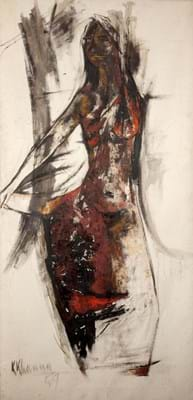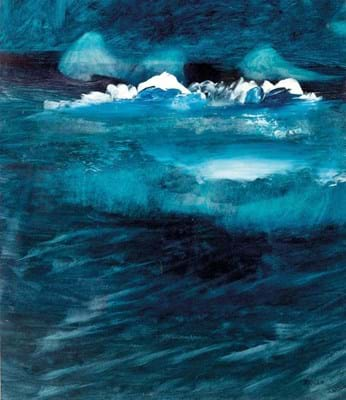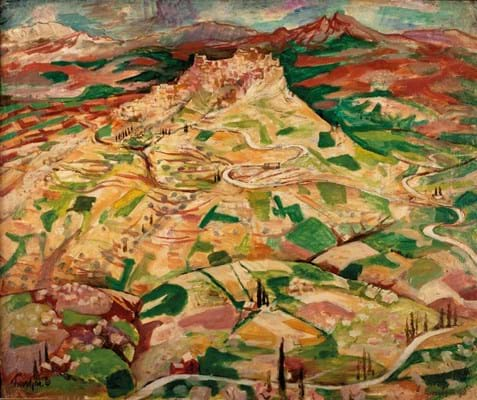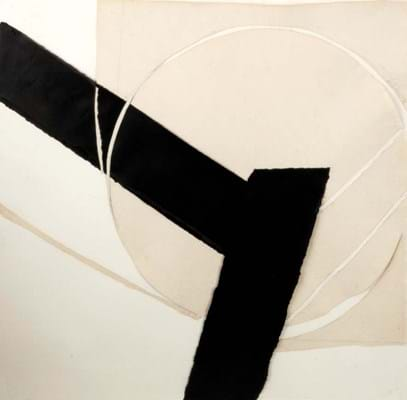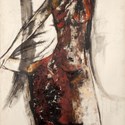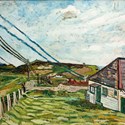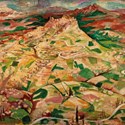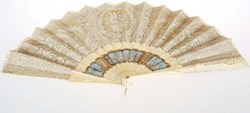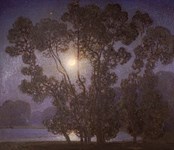Art market
IT’S not just Modern British artists whose prices have been on an upward trajectory.
India’s equivalent ‘Mod Brit’ period has become a buoyant field too, says Philip Smith, specialist and head of 20th century design and Modern British art at Mallams (20% buyer’s premium).
“The market is strong and there is a real reintroduction to these Indian artists that 10 years ago were not seen as so interesting.”
This was evident in the attention given to a picture that topped the auction house’s Modern British and Post-War art sale on December 9 in Oxford. The work was a female nude by one of India’s leading mid-century artists, Krishen Khanna (b.1925).
A largely self-taught painter, Khanna had an unusual entry to the world of art, beginning adulthood as a banker before becoming a full-time artist in 1961.
The signed 6ft 1in (1.86m x 89cm) oil on canvas, painted in 1959, is a rare survivor from his banking years.
Privately consigned from a family in the UK and featuring the nude in full length, it was summed up by Smith as a “very commercial work”.
It sold to an international buyer at £32,000 against a £3000-5000 estimate.
Nolan in Antartica
The crop of international art at Mallams also featured a striking study of Antarctica by the Australian artist Sidney Nolan (1917-2002).
The 2ft x 20in (62 x 51cm) oil on paper forms part of a series painted in 1964 after Nolan visited the Antarctic as a guest of the US Navy during Operation Deep Freeze, fulfilling a boyhood passion for the continent and the story of its early explorers.
Consigned fresh to the market from a private estate, the study is one of only a handful to have come to auction in recent years. Most from the series, which are mainly largescale oils, are held in public galleries and museums.
With few direct comparisons to value the study against (Christie’s offered another oil on paper example from the 1964 Antarctica series in 2007 but it went unsold at £5000- 7000), it was entered into Mallams’ sale guided at £1500-2500. Strong bidding ensued and it eventually sold in the room to a UK institution at £8000.
Trevelyan in Italy
Among the British talent on offer was an early Italian landscape by Julian Trevelyan (1910-88).
The 2ft x 2ft 6in (62 x 75cm) oil on canvas features a patchwork valley with a road winding its way through to a hilltop town.
It was created in 1949 during a trip to Taormina in Sicily with the artist Mary Fedden, his future wife. The paintings he produced during this early period in the 1940s and ‘50s are viewed as his best, and few works from this seminal trip have come to the market. Fedden had asked Trevelyan to drive her to Italy after a party at her Chelsea studio – the first holiday they went on together.
Consigned from a private estate where it had been since being acquired from London dealer Austin Desmond in the late ‘70s or early ‘80s, it sold to a UK dealer for £11,200 against a £6000-10,000 estimate.
Asked whether the market for Trevelyan’s oils still had some way to climb, Smith said: “I think his market is very good and prices recently have been strong for quality paintings, but I don’t think he is ranked among the first-rate painters of his generation.
“I think he was one of the foremost printmakers of his generation, and it is hard for collectors to see him as both.”
The oil at Mallams was offered hot on the heels of Sotheby’s dispersal of the personal collections of Fedden and Trevelyan in November.
“The prices at Sotheby’s were good, but if he was really going to make serious money, he would have gone on to make considerably more in that sale,” Smith added.
Other highlights included a good price for popular English abstract painter Sandra Blow (1925-2006).
Omega is a signed 2ft 1in (65cm) square acrylic on south Indian gelatine cotton. Painted in 1989, it sold at Blow’s solo exhibition at the Francis Graham-Dixon Gallery in London in 1991. Estimated at £1000-2000, it went on to sell at £5400 at Mallams.
Also featured was a lively landscape by the prolific and colourful painter John Bratby (1928-92).
Birling Gap, East Sussex, a signed 2ft 10 in x 3ft 11in (86cm x 1.19m) oil on canvas of the home he shared with his first wife Jean Cooke, dates from his most influential period as the leading talent of the ‘Kitchen Sink’ painters in the 1950s.
“Unlike the many portraits he produced, this rare landscape directly relates to him as an artist, what he was doing, where he was living and, of course, dates to when he was at the forefront of the British realist tradition,” said Smith.
It sold to the UK trade for £2800 against a £1500-2500 estimate.


